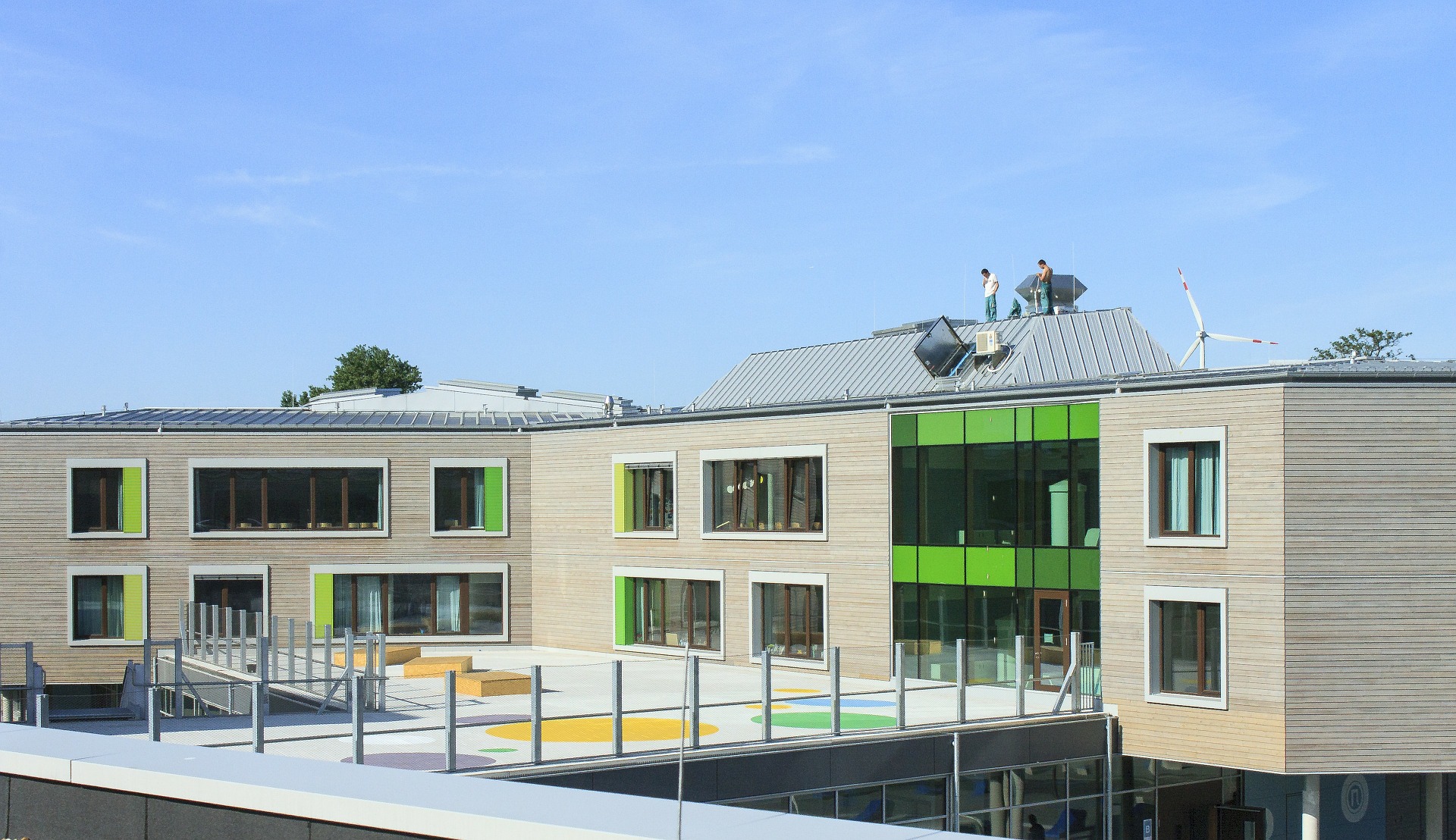International School
International School has gained popularity in India with more and more affluent parents enrolling their children to give them a competitive edge. The growth of this can be attributed to economic revolution initiated in 1991. This threw open global opportunities and the competition became severe in all areas, including education.
Education prepares the next generation to face the world.

Image Courtesy-Herbstrose
What is an International School
An International school is a school that promotes international education by adopting a curriculum that is affiliated to institutions outside the country or national curriculum that is different from the school’s country of residence. Thus International schools in India are seen to adopt a variety of curricula like International Baccalaureate (IB), Cambridge International Examinations (CIE), and International General Certificate of Secondary Education (IGCSE) and so on.
International School- The Approach
· Exposure to a variety of different cultures and backgrounds can be extremely enriching for a child, and international schools offer this experience. Many international schools follow an international curriculum such as the International Baccalaureate, which incorporates a wider world view into the teaching process and encourages students to engage with other world cultures. This curriculum is acknowledged and used across the world and is recognized as an excellent form of education to the point that improves children’s chances of entering higher education. As a rule, international schools believe in the importance of diversity and the celebration of difference, allowing students to grow up into emotionally mature, well-rounded individuals with a better understanding of the world around them.
· This celebration of diversity is also expressed through international schools’ renowned focus on extra-curricular activities, which is a great way to nurture and develop a child’s creativity and imagination. Children who participate in extra-curricular activities are less likely to experience behavioral problems and also show improvements in focus and drive; they can also help children to better develop confidence in problem-solving skills and critical thinking. Children can discover and explore new talents and be encouraged in their new skills, proving that it’s not just their education that contributes to their development as individuals.
· Finally, it’s been proven repeatedly that learning in an international school opens doors for its students. Studies have shown that children from international schools are more likely to attend colleges and universities and their international education puts fewer limits and restrictions on them. The chances are high that they will leave the country competent in more than one language and with enough knowledge and understanding of world culture for a smooth transition. Being able to speak more than one language is very important for anyone with ambition; it allows students to travel the world and carry out international business matters with ease.
The IB program helps students understand their own culture and national identity and then encourages them to explore other cultures.
Scene in India
Thanks to Inputs given By Ms. Sarada Chandrasekar ,a consultant and experienced administrator
1. Which is the most popular model?
IGCSE is a more structure program than IB and CBSE
2. Other than local authorities who gives recognition for International School(IS)
Cambridge UK. Australia for IB
3. a) Why do parents choose IS ?
i. The students can pursue the undergraduate courses abroad.
ii. Understand Global Perspective.
iii. Can ace in SAT, GMAT etc. easily
b) General Profile of Parents:
1.Business 2.IT Higher officials.3. Rich Asian and African parents
4. What % of children belong to expat community?
Less than 5%
5. Capital Investment in INR Million
INR 500,000 for service charges for UK curriculum
Non Residential- INR 150-20o Millions of investment on Infrastructure.
Residential INR 300 -400Million
6. Lead time to start school:
6 months minimum if the building is ready.
7. Annual Fees- Residential & Non-Residential:
IGCSE/IB : 2.5-3 lakh for Non-residential.
3.5-10 Lakh for residential.(depending upon the facilities provided)
8. Minimum Student strength:
10 in a class
9. Key Difference between CBSE & IS:
I. Global Standard
II. Innovative teaching methodology
III. In-depth knowledge of the subject
IV. Practical approach.
V. International Certification.
VI. Global/wider opportunities
VII. Exposure.
VIII. Easier entry into western universities.
10. Class room vs Extracurricular activity ratio:
1:2
11. Faculty& Principal- Have to be certified by International body
It is advisable.
12. Can tier 2/3 towns afford IS
NO
13. Any Draw backs of IS:
Getting quality teaching faculty is the major challenge. No.of takers is less.
14. Overall Perspective as a Consultant:
Need to recruit international faculty to suit the needs of the curriculum.
Exertional Infrastructure
Market study before starting the school with International curriculum
Have a specific USP of the school .Ex. Indian culture with western learning technologies, Sports specialty etc.
15. Overall perspective as an administrator:
We need to focus more on marketing for building the image/bringing awareness.
Right Location needs to be selected. North India is better for International curriculum than South India.
In South India, Hill stations for residential till recently. Now a day the approachability is also to be considered.
We need to decide whether number is important or Board is important as IS is still taking time to spread across.
A Mother's Perspective
Thanks to Inputs from Ms. Arte Ramgopal
To survive in today’s world, children need to be able to express themselves clearly, interact with others socially, and be able to show off their skills confidently. That is communication skills, social skills, fluency in English and confidence.
They need to be good at something more than learning things by-heart. The traditional job roles are limited to engineers and doctors. This is not so in today’s world where people can take up any interest or hobby and lead a successful and happy life pursuing it.
Indian curriculum mainly seems to focus on rote learning. There is hardly any support or infrastructure for sports or other extracurricular activities.
There is the inevitable rounds of tuition, hours of homework and rote learning – which doesn’t develop any kind of soft skills in a child. Teachers are focused more on completing the curriculum and not enough on the students and their needs.
Even though Aaditya was in an IS school right from the beginning - the school itself was run in a traditional way.
So a particular type of curriculum in itself is insufficient.
The right IS curriculum and school combination provides the right environment for children. This is far more important to us, than getting full marks in school but being unable to cope with anything outside the classroom.
IS focuses on ‘understanding’ rather than rote learning. Learning goes beyond teaching in the classroom. There are different types of pedagogy used. This helps children understand from a more complete perspective. They have projects, they create presentations, they have surprise tests etc. which prepares them to deal with the environment they will actually face outside school.
Since the number of children in the classroom is small, it allows teachers to pay individual attention. Children get the opportunity to be on stage in front of a large audience frequently. They have maths, science fairs and literature festivals, sports day, annual day concerts & other activities that encourage children to come forward in different spheres and show their skills.
Lastly, one of the reasons for choosing IS curriculum is that it prepares the child to study abroad in the future, if he so wishes. As an added benefit they interact with students and teachers from different countries.
International School- Conclusion
It is niche segment catering to the affluent section of society. The school may attract expats.
The children get a better cultural exposure to play their role as global citizens.
The focus is not only on academics but overall development and they get opportunities to develop their talents, be it in sports, music, theatrics etc.
The capital cost for setting up is high and the annual fees are steep.
Normally these schools are setup in Metros or hill stations.

